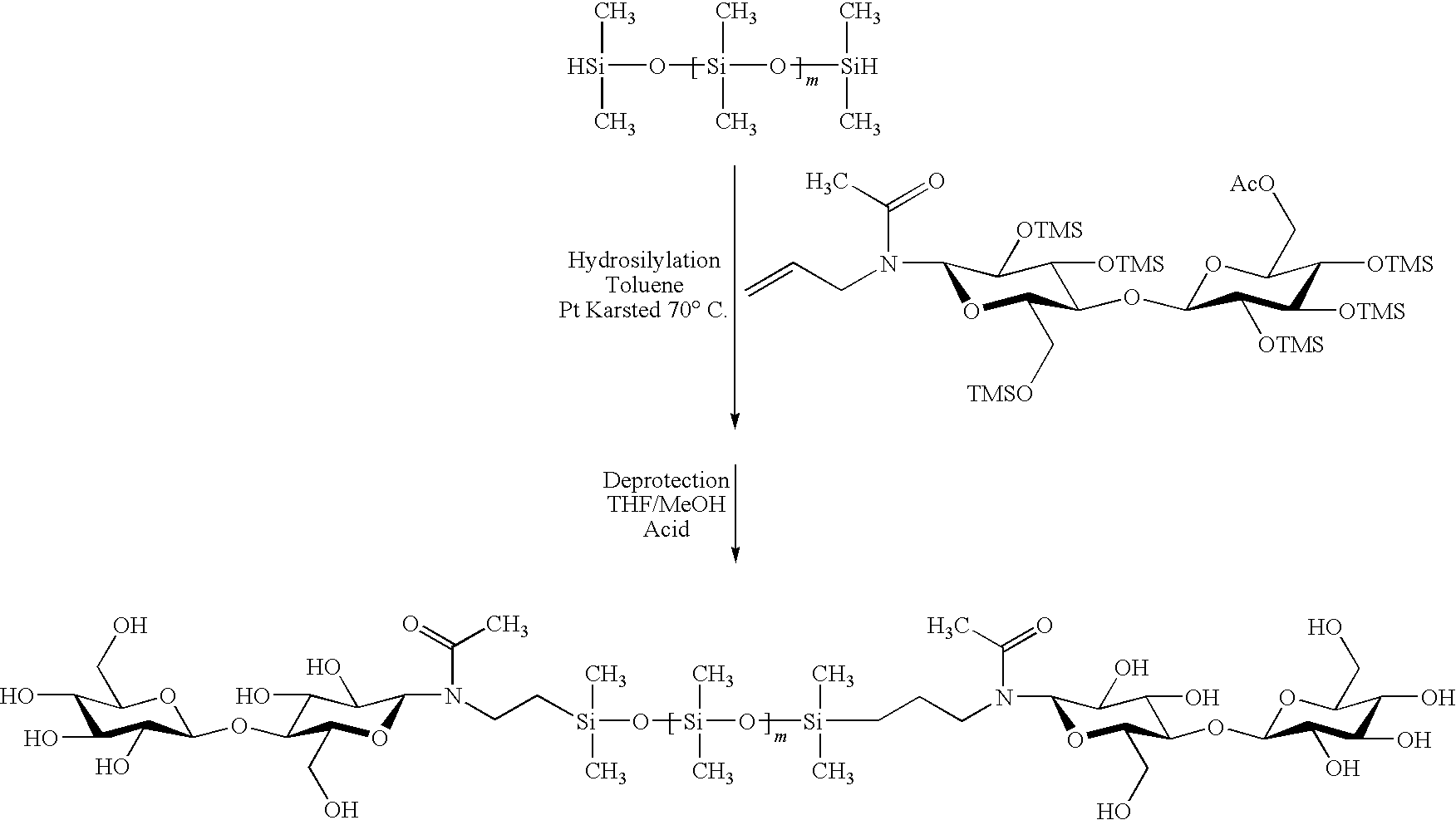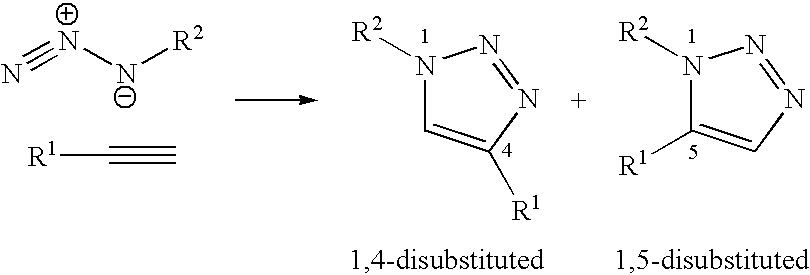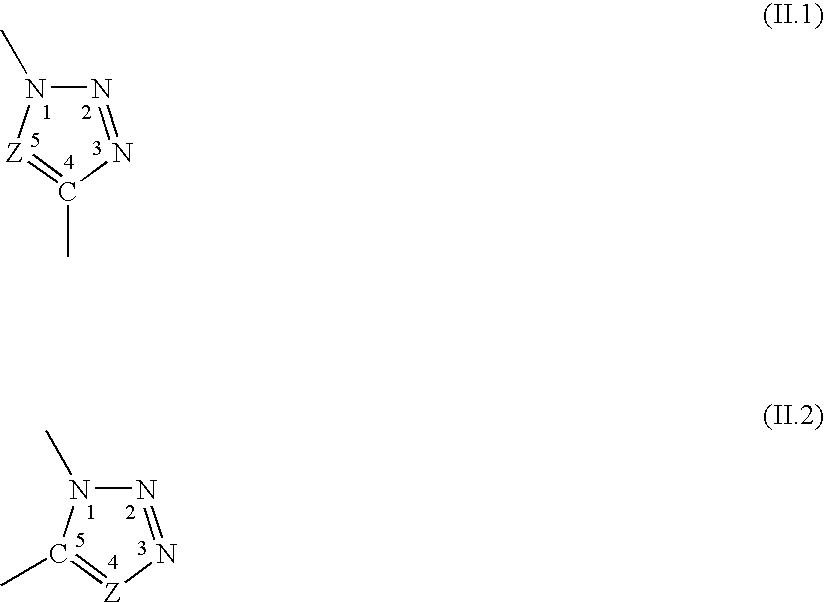Hybrid compounds based on polyol(s) and at least one other molecular entity, polymeric or non-polymeric, in particular of the polyorganosiloxane type, process for the preparation thereof, and applications thereof
a hybrid compound and polyol technology, applied in the field of new hybrid structures, can solve the problems of appreciable protection/deprotection constraints of saccharides, extreme disadvantage, and constraint on protection of sensitive groups (oh, amine) of a, b and
- Summary
- Abstract
- Description
- Claims
- Application Information
AI Technical Summary
Benefits of technology
Problems solved by technology
Method used
Image
Examples
examples
[0223]The hybrid compounds in the following examples are oligoorganosiloxanes or polyorganosiloxanes, more precisely PolyDiMethylSiloxanes (PDMS) with trimethylsilyl ends (MDIoM) modified with oligosaccharide groups (cf. structures A, B, C) as well as oligosaccharides modified with an alkyl chain (cf. structure D) according to a “click chemistry” mechanism.
Structure No. A: PDMS type [MD10cellobiose modifiedM]
Structure No. B: PDMS type [MD10oligoxyloglucan modifiedM]
Structure No. C: PDMS type [Moligoxyloglucan modifiedD10Moligoxyloglucan modified]
Structure No. D: Alkane (C18H38) modified oligoxyloglucan
Experimental Section
[0224]This section describes the experimental stages which made it possible to obtain the structures A, B and C described. These stages comprise:[0225]synthesis of the terminal alkyne derivatives of the sugars,[0226]synthesis of the azido derivatives on a polyorganosiloxane or polyalkane base,[0227]condensation via the 1,3-dipolar cycloaddition or “click chemistry” ...
PUM
| Property | Measurement | Unit |
|---|---|---|
| valence | aaaaa | aaaaa |
| electrical potential | aaaaa | aaaaa |
| polar | aaaaa | aaaaa |
Abstract
Description
Claims
Application Information
 Login to View More
Login to View More - R&D
- Intellectual Property
- Life Sciences
- Materials
- Tech Scout
- Unparalleled Data Quality
- Higher Quality Content
- 60% Fewer Hallucinations
Browse by: Latest US Patents, China's latest patents, Technical Efficacy Thesaurus, Application Domain, Technology Topic, Popular Technical Reports.
© 2025 PatSnap. All rights reserved.Legal|Privacy policy|Modern Slavery Act Transparency Statement|Sitemap|About US| Contact US: help@patsnap.com



